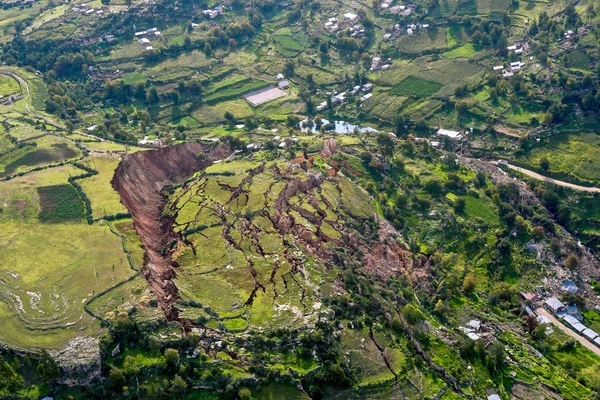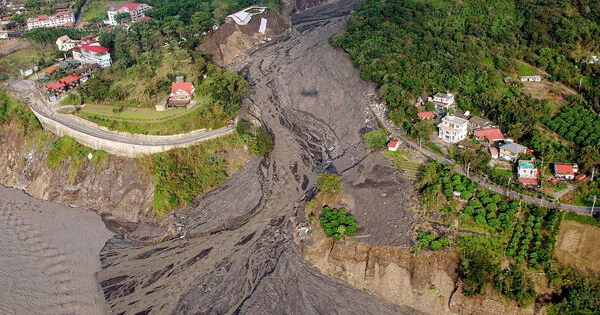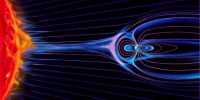Earthquakes and landslides are terrifying and destructive natural disasters. An earthquake is a sudden, violent shaking of the earth caused by the breaking and shifting of rock deep underground. An earthquake in a populated area has the potential to cause many deaths and injuries, as well as extensive property damage. Although earthquakes are sometimes thought to be a West Coast phenomenon, there are 45 states and territories in the United States (including Pennsylvania) that are at moderate to high risk.
Satellite observations have revealed that even several years after a major earthquake, weak seismic ground shaking can cause powerful landslide acceleration. These observations contribute to a more complete picture of landslide behavior triggered by seismic activity and provide tools for real-time monitoring to support rapid rescue operations.
Every year, landslides, a natural geological hazard all over the world, cause significant human and economic losses. Landslides killed over 18,000 people and affected an estimated 4.8 million people worldwide between 1998 and 2017. (estimates from WHO). Landslides can be caused by earthquakes, volcanoes, rainfall, or human activity, and the recent landslide that ripped across the Italian island of Ischia is an example of a landslide caused by rainfall.
This study contributes to a comprehensive understanding of the risk of earthquake-induced landslides, including coseismic landslide failures and post-earthquake landslide dynamics.
Professor Jianbing Peng
Published in the journal Nature Communications, the study focussed on earthquake-accelerated landslides (EALs). These types of landslides are affected by the long-term seismic effects and may maintain accelerated motion for a long time after the earthquake. EALs cause particularly serious human casualties, especially in seismically active areas.
The research was led by Professor Zhenhong Li, presently at Chang’an University (China), and Professor Utili at Newcastle University. They also worked with Professors Giovanni Crosta and Paolo Frattini at the University of Milan-Bicocca, Italy.
The scientists used satellite radar observations to detect and investigate the activation and recovery of EALs in Central Italy. Their work has led to the first ever complete EAL inventory, which has the potential to inform long-term landslide risk assessment in seismically active areas.

Professor Stefano Utili, Professor of Geotechnical Engineering at Newcastle University’s School of Engineering, said: “This work is of great significance for long-term landslide risk assessment in areas where we see seismic activity. People tend to think landslides triggered by earthquakes only occur during or immediately after an earthquake, but unfortunately, an awful lot of them happen several years after the seismic event in areas previously thought safe so it is not easy to make predictions. This study showcases a cost-effective and efficient methodology based on satellite imagery to identify and assess the risk posed by ground movements becoming catastrophic landslides following an earthquake in the long term. The next steps will be for civil authorities to adopt the methods.”
When an earthquake occurs, the transmission of seismic waves can cause ground surface shaking and vibration. This frequently causes the collapse of potential landslide areas, a phenomenon known as earthquake-induced landslide. According to statistical data of landslides triggered by severe earthquakes in the past, a number of factors, such as the nature of the earthquake (triggering factors) and the geographical, hydrological, and meteorological conditions of the landslide location, can affect the results and scale of landslides.
“This study contributes to a comprehensive understanding of the risk of earthquake-induced landslides, including coseismic landslide failures and post-earthquake landslide dynamics,” said co-author Professor Jianbing Peng, Member of the Chinese Academy of Sciences (CAS), “and it is of great significance for the long-term assessment and management of landslide hazards in seismically active areas.”















